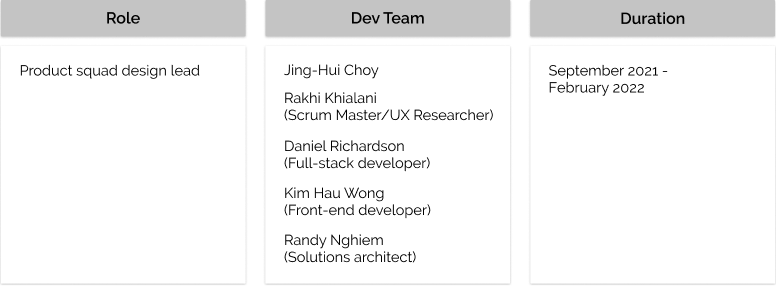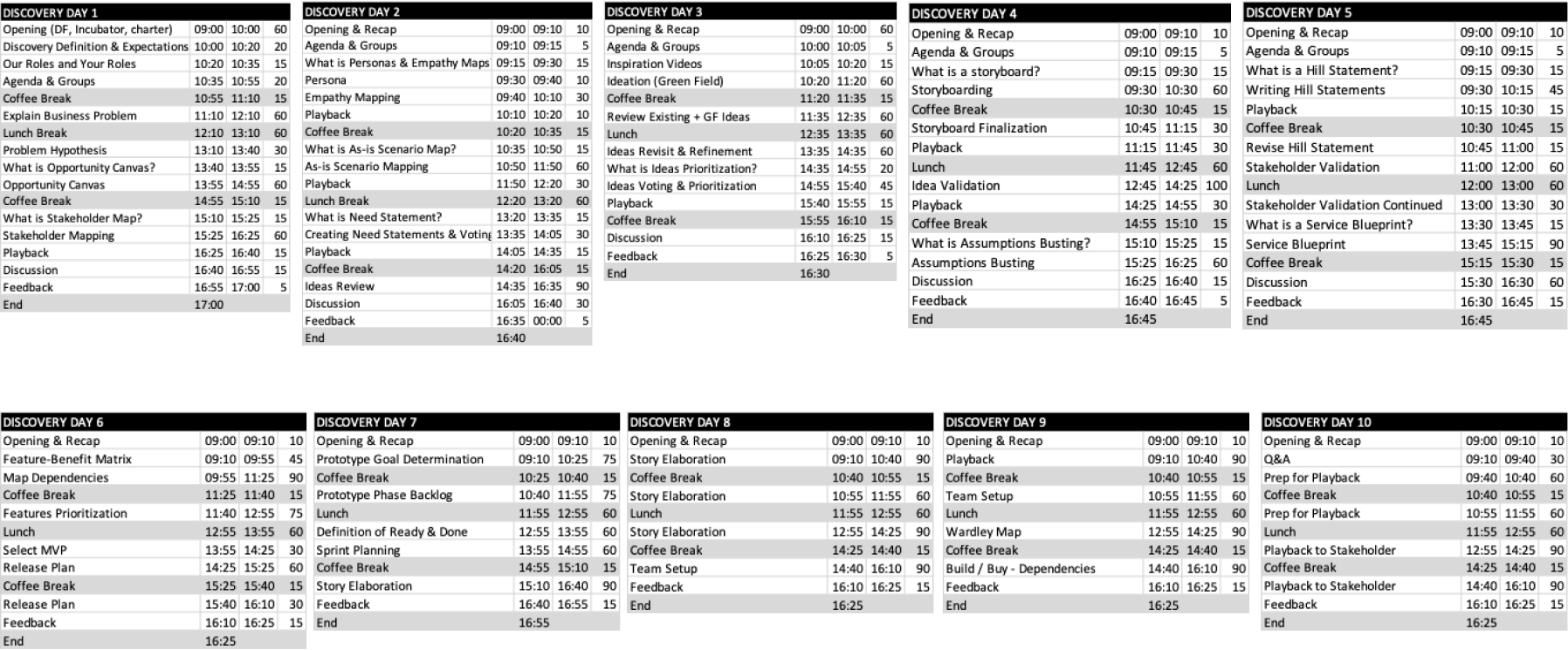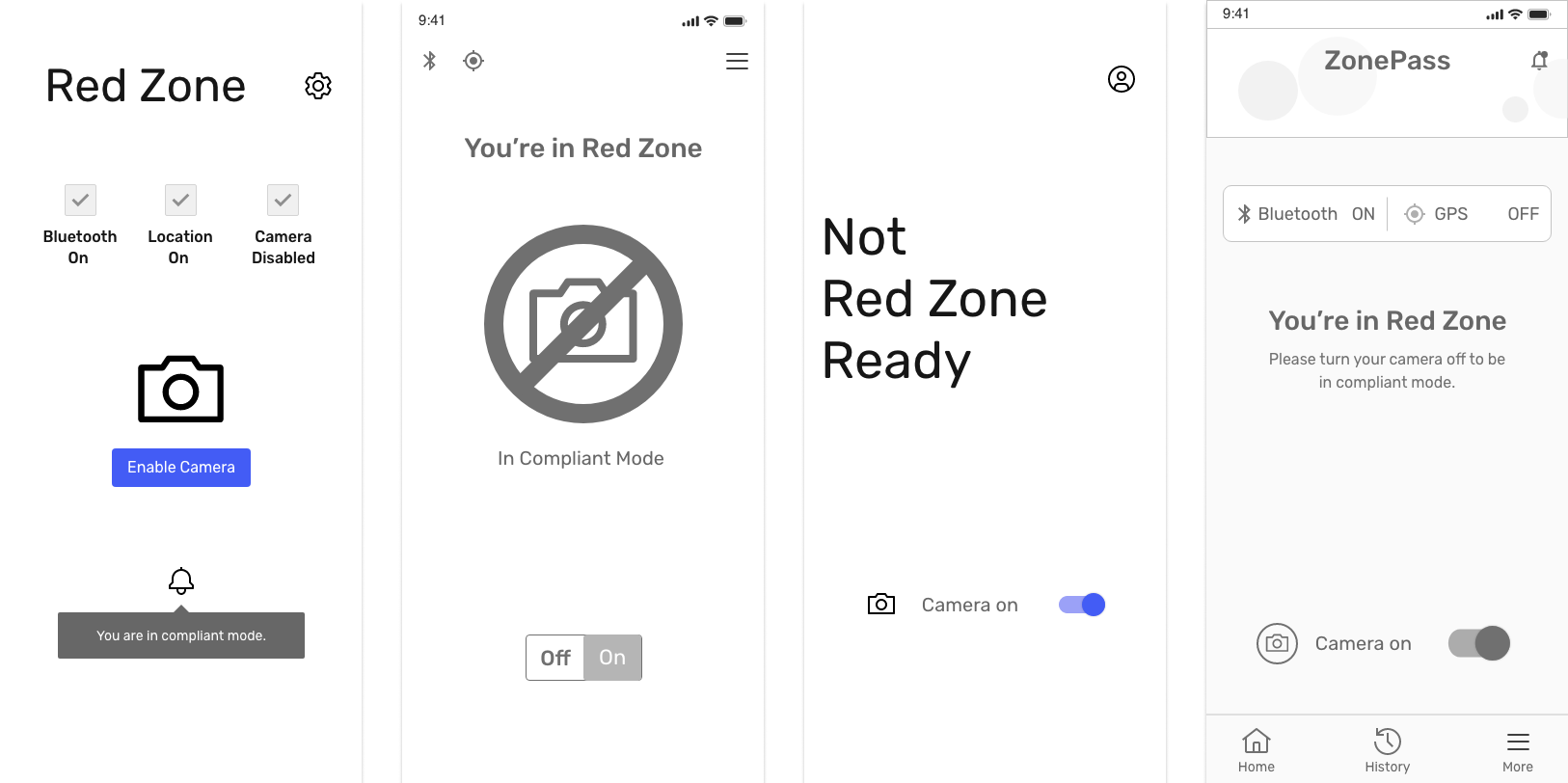Camera Disabling Mobile App
Camera disabling mobile application for the Singapore government

Background
As the UX Lead for the product, I led the product through most of the design thinking process.
My role started from the discovery workshop, to the prototype phase, and to the beginning part of the pilot phase. I handed the product to another designer before leaving the organization for my next role.
The product is a native mobile app that enables users to disable their phone camera before entering restricted areas (Red Zones).
This was born in a skunkworks collaborative space to accelerate digital problem statements using Agile methodologies.
Discovery Workshop
We used IBM's Enterprise Design Thinking and Scrum planning frameworks to translate a nebulous problem into actionable next steps.

One of the most useful artefacts that we created during the workshop was the service blueprint, as it helped us all aligned on the complex business logic behind the product and service.

Process
We began by sending out a survey to assess users' preferences for disabling their camera, as we were exploring a few tech possibilities i.e. QR code scanning, bluetooth beacons, manual disablement. To our delight, the survey gathered over 5000 responses, which helped us decide on a manual disablement solution.
We started out by wire framing a few different design directions, to capture requirements and also to explore alternatives.

After capturing the requirements from the Product Owners, Product Manager, and tech, I did my prototype in high fidelity as I had a design system to leverage on.
Design Demo
The video below showcases how the product works in a day of the life of a user. This was the version of the prototype presented during a senior stakeholder review.
Learnings
The product and service has complex business logics and requirements across all the layers of the service blueprint. An early mistake we made was not keeping the service blueprint a living document as we moved along. Thus, the Product Owners, Product Manager, and everyone on the development team constantly diverged on the understanding of the latest business logic. We resolved this by:
1) Updating the service blueprint as we gained new information along the way.
2) Scheduling a weekly check-in to align everyone on the latest business logic, after our Sprint Planning and Product Backlog Refinement ceremonies.
